Ghana Month: Breathtaking photos of Ghana then and now
One can only stand in awe at how much Ghana has transformed into a beautiful country with many wonderful sites to behold.
A brief tour around Ghana, especially the major cities, will undoubtedly prove to you that Ghana is developing at a fast rate.
Though there is still a lot of infrastructural work to be done in the country, these pictures speak a lot about our past and where we are headed.
As part of the Ghana Month Diary, here are some photos of Ghana then, compared to the present.
- Airport Residential Area
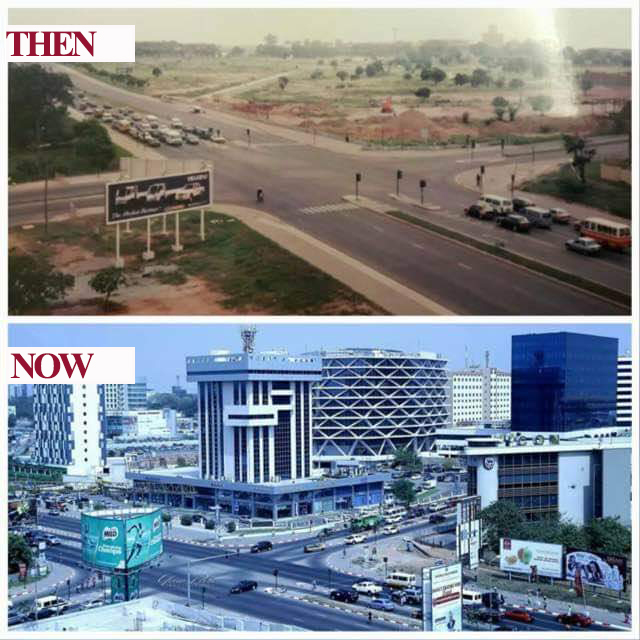
This sparsely populated residential area is about 10km northeast of the city centre, close to the Kotoka International Airport.
It is primarily inhabited by Ghanaians and foreigners.
It has numerous offices, including those of international NGOs, and many embassies are also located here. Housing is mostly in low-rise apartment blocks built during the colonial era and renovated to meet modern standards. Most properties have security guards.
The roads are good and lined with trees, making the area feel breezy and cool. There are several schools and shops as well.
- Kwame Nkrumah Interchange(Now Circle Dubai)
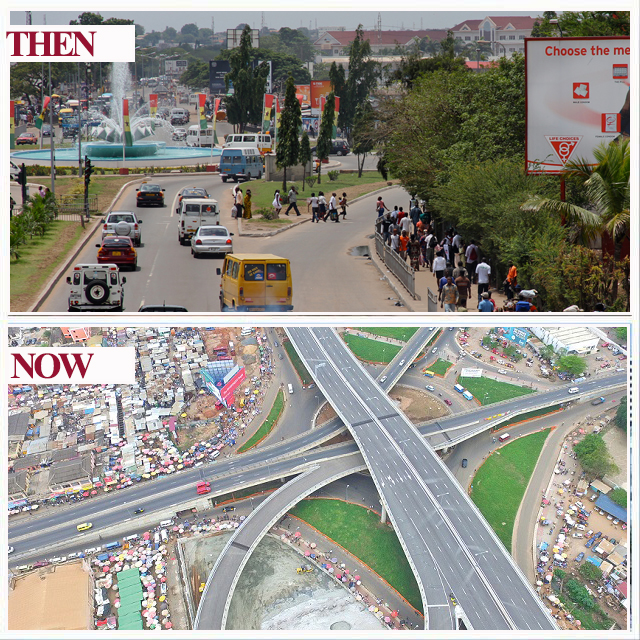
The Kwame Nkrumah Interchange is seen as the biggest interchange in West Africa.
The facility, in honour of the country’s first president, Dr Kwame Nkrumah, surely adds to Ghana’s image as a gateway to the sub-region.
There are ancillary facilities such as a fire service post, an ambulance post and a modern lorry park.
Dr Nkrumah’s statue at the place has added more colour to the edifice. The statue invokes the memory of the Pan- Africanist, who turned Accra into the Mecca of nationalism during the nationalist struggle.
- Parliament House of Ghana
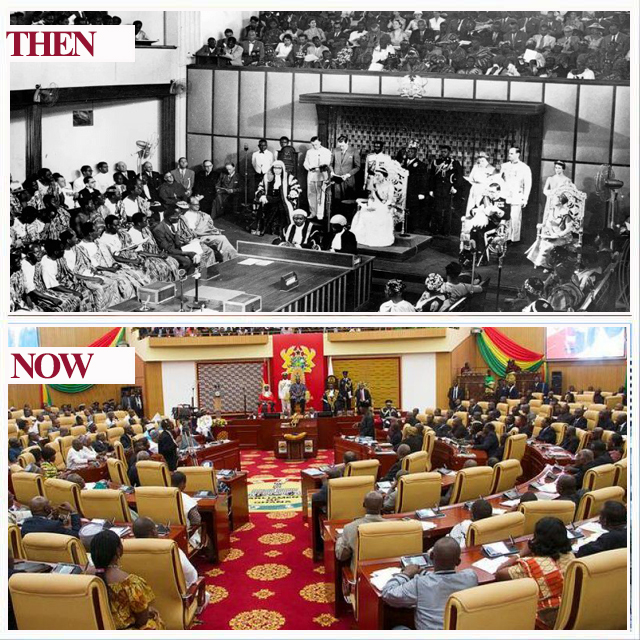
The Parliament House of Ghana is the official seat of the Speaker of Parliament of the country and also serves as the Parliament of Ghana.
The building was first designed and built by Ghana’s first president Dr Kwame Nkrumah.
- General Post Office (formerly Gold Coast Post Office)
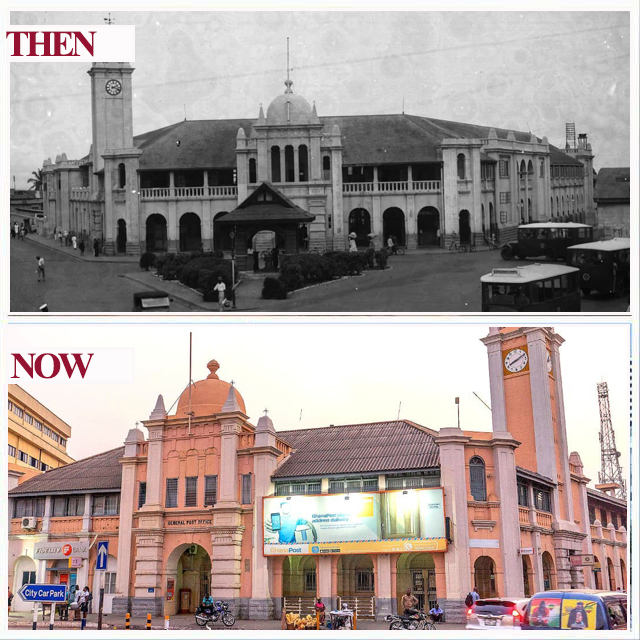
The British colonial settlers in Cape Coast set up the first ‘modern’ British Post Office in Ghana in 1853. That post office was primarily concerned with exchanging mail between the Gold Coast and the United Kingdom.
By 1873 the postal service had expanded to include other towns in the colony, including Elmina and Keta.
In 1877 after the colonial government decided to move the capital from Cape Coast to Accra, the headquarters of the postal service was set up in Accra.
Plans were put in place to construct a building befitting the status of the Central Post Office, and the building was completed in the 1880s.
- Ghana Commercial Bank Head office
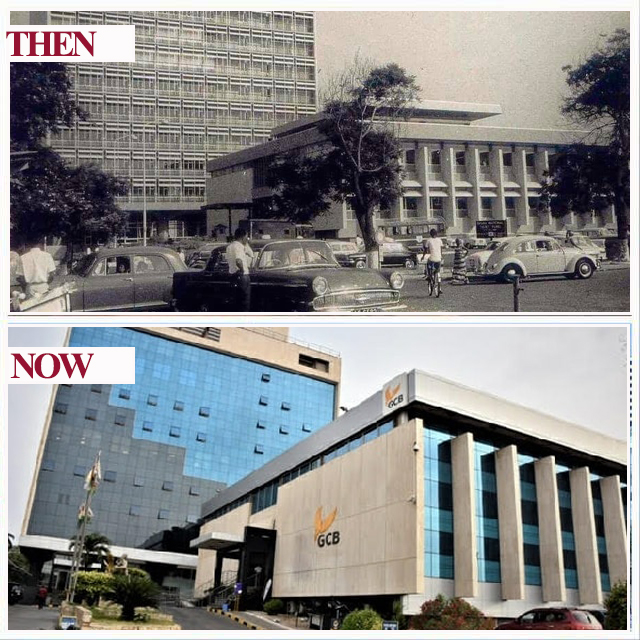
The bank was founded in 1953, with 27 employees, as the Bank of the Gold Coast. Initially, it focused on serving Ghanaian traders, farmers, and business people, who could not obtain financing from the expatriate banks.
In 1957, when Ghana attained independence, the bank re-branded to Ghana Commercial Bank to concentrate on commercial banking since the Bank of Ghana had been created to function as the central bank and banking regulator.
In the beginning, the bank was wholly owned by the Government of Ghana. However, in 1996, when government shareholding stood at 51.17%, the bank’s stock was listed on the Ghana Stock Exchange.
In 2013, the bank renamed itself GCB Bank Ltd, with a new brand identity launched at the end of 2014.
- Orion cinema
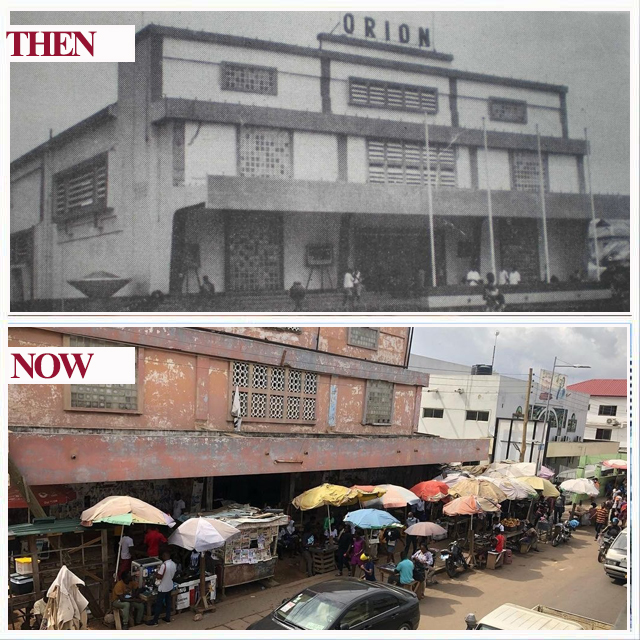
The Orion Cinema, located within the Kwame Nkrumah Interchange enclave, is said to have hosted huge crowds on special nights, with people queuing up to catch a glimpse of the latest film production.
The cinema often showed major productions from India, the US, and other parts of the world and operated in Ghana for some years.
But through the years, urbanisation cropped in, forcing the cinema to fold up without re-emerging on the entertainment scene.
- Osu Ebenezer Presbyterian Church

The Presbyterian Church, Ebenezer Congregation, is located at Osu, Accra. It was established by the Basel Evangelical Mission Society, based in Switzerland.
The congregation began worshipping in a chapel located at the castle around 1843. The stone-masonry building was erected between 1898 and 1902 in the heart of Osu and has become a significant landmark.
The building, which dates back over one hundred years, is a site of memory and a record of early interaction between missionaries and communities on the coast of what is present-day Ghana.
- Korle-Bu Teaching Hospital
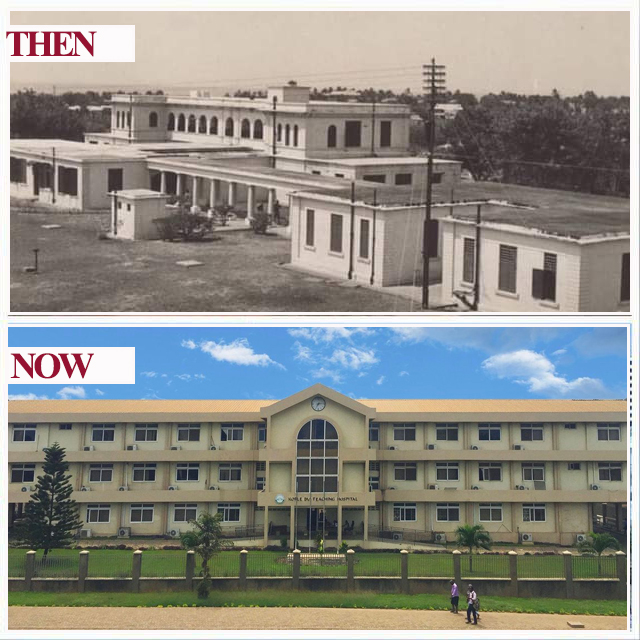
The Korle Bu Teaching Hospital, Ghana’s premier tertiary healthcare facility, was established on October 9, 1923. The facility was built under the administration of Sir Frederick Gordon Guggisberg, then the Governor of the Gold Coast, as a general hospital to attend to the health needs of the people.
Korle Bu, in the local Ga parlance, means ‘the valley of the Korle Lagoon’.
Shortly after its establishment, Korle Bu witnessed an increase in hospital attendance due to the proven efficacy of hospital-based treatment. This surge in accessing the hospital’s services used to cause severe congestion, compelling the government to set up a committee to assess and make recommendations for its expansion in 1953.
The Task Force’s recommendations were accepted, and new structures such as Child Health, Maternity, Medical, and Surgical Blocks were added to the hospital. This increased Korle Bu’s initial 200-bed capacity to 1,200.
The hospital gained teaching hospital status in 1962 when the School of Medicine and Dentistry, formerly the University of Ghana Medical School, was established to train doctors.
- Achimota Senior High School
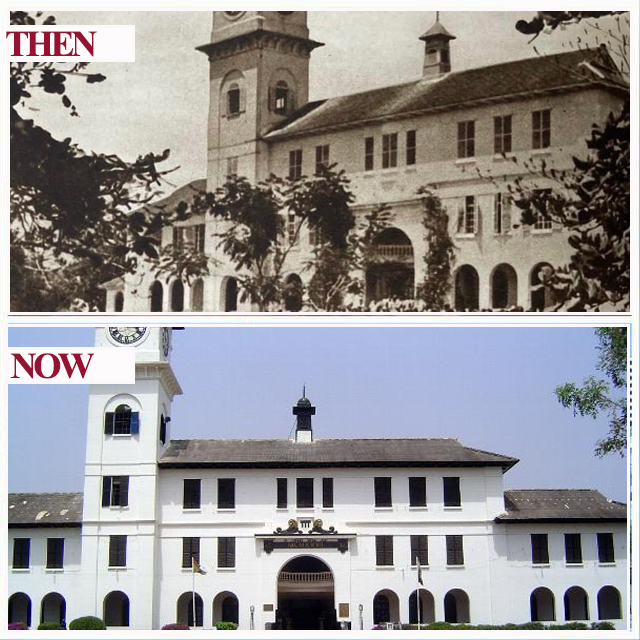
Prince of Wales College and School, later Achimota College, was founded in Achimota, Gold Coast (now Ghana) in 1924 by Sir Gordon Guggisberg, the British Governor of the Gold Coast (1919-1927), as an elite secondary school based on the British model of public education.
Governor Guggisberg urged local Gold Coast residents to create the institution to provide the colony with teacher training, technical training, and secondary schooling.
The Governor’s request came after a committee he appointed in 1920 to investigate education in the Gold Coast recommended establishing a secondary boarding school.
- Light House

The lighthouse is an iconic landmark in James town on Prof. Atta-Mills High Street in Accra.
The monument consists of a tower and adjoining maintenance. It was first built by the British in 1871, three years before they established the Gold Coast colony, and symbolised their expanding colonial ambitions on the West Coast of Africa.
-
Sir Frederick Gordon Guggisberg Statue at the Korle Bu Teaching Hospital
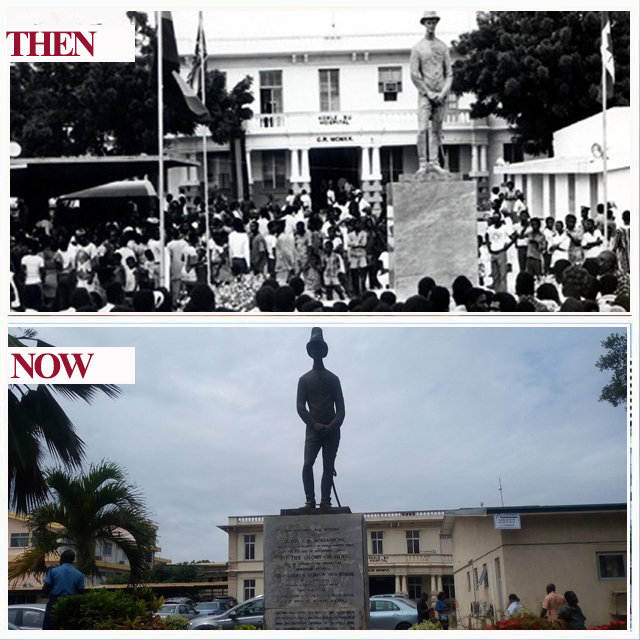
Governor Sir Frederick Gordon Guggisberg’s statue at Korle Bu Teaching Hospital, Accra, was inaugurated in 1974 on the occasion of the 50th anniversary of the founding of the hospital.
The Korle Bu Teaching Hospital is one of several monuments in Ghana representing the outstanding contributions of Sir Frederick Gordon Guggisberg (1869 — 1930).
Sir Gordon Guggisberg invested his life in laying a solid foundation upon which Ghana was built.
- Presbyterian Boys’ Boarding School (Osu Salem School)
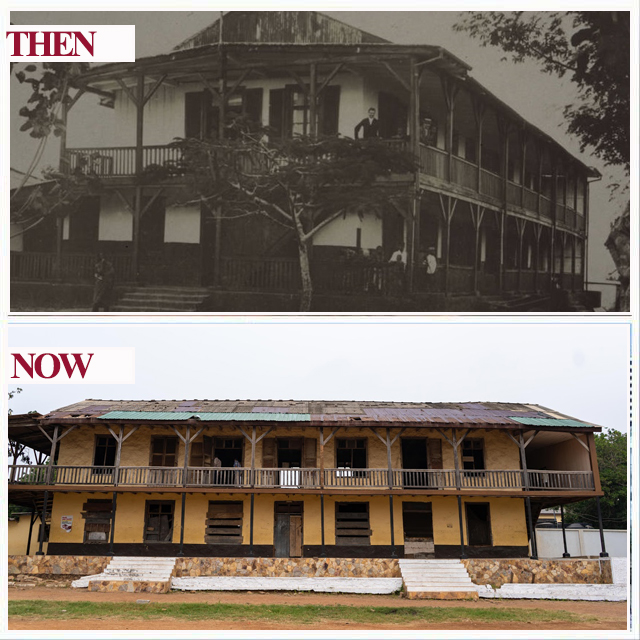
The Presbyterian Boys’ Boarding School (Osu Salem Presbyterian Middle Boys’ School) was the first European -style middle boarding school to be established in Osu, Accra, Ghana.
The Basel Mission of Switzerland founded the boarding school in November 1843.
The school has produced prominent individuals such as Sir Emmanuel Charles Quist, barrister, judge and the first African Speaker of the Legislative Council. He was also the first Speaker of the Parliament of Ghana.
Other alumni include Nii Amaa Ollenu, former Chief Justice and Speaker of the Parliament of Ghana in the Second Republic.
- Interior of Christiansborg Castle(Osu castle)

The Christiansborg Castle is located off the shores of the vibrant suburb of Osu in the capital, Accra.
In 1661, Jost Cramer, the Danish Governor of the Cape Coast Fort, Fort Fredericksburg, obtained the site for 3,200 gold florins from the then Paramount Chief Okaikoi of the Ga ethnic group.
The Danes built a stone fort at this site in 1659 to replace the earthen lodge that the Swedish African Company had erected earlier.
They named it Christiansborg, meaning ‘Christians fortress’, after the King of Denmark, Christian IV, who passed away in 1648.


